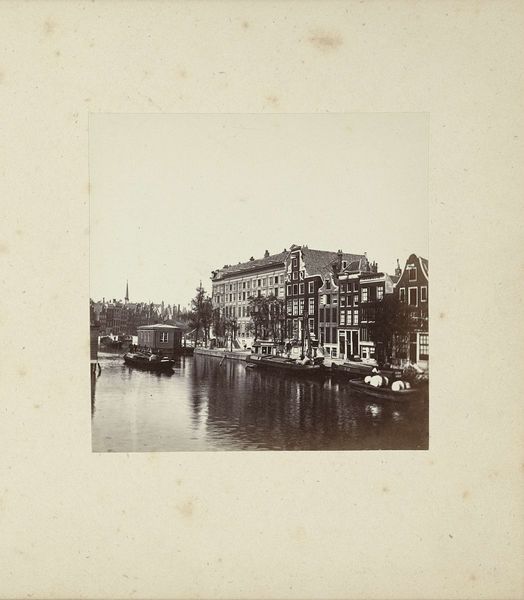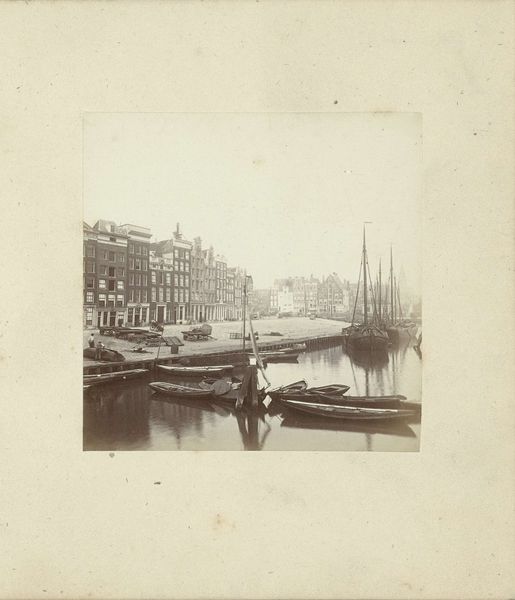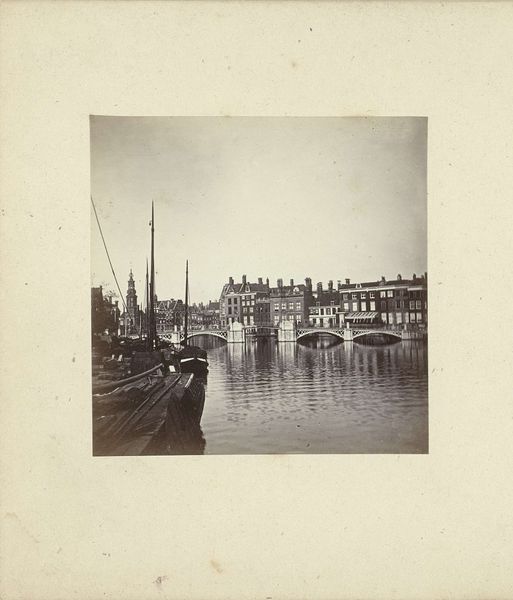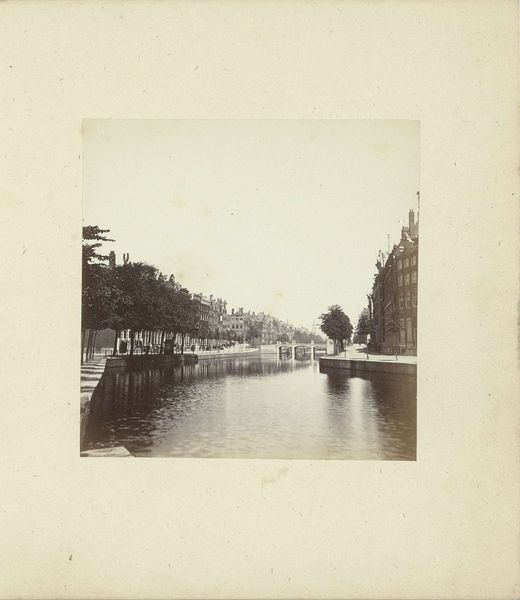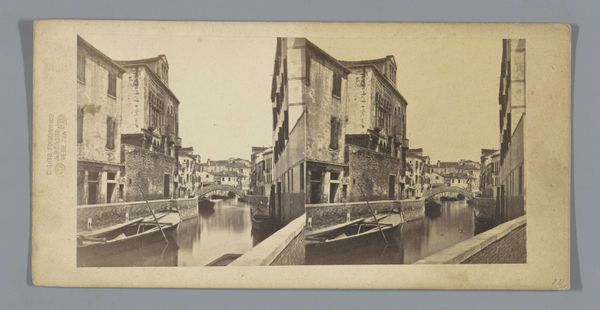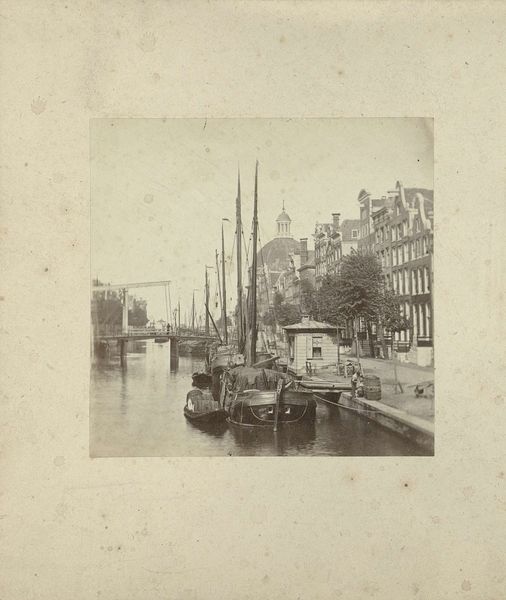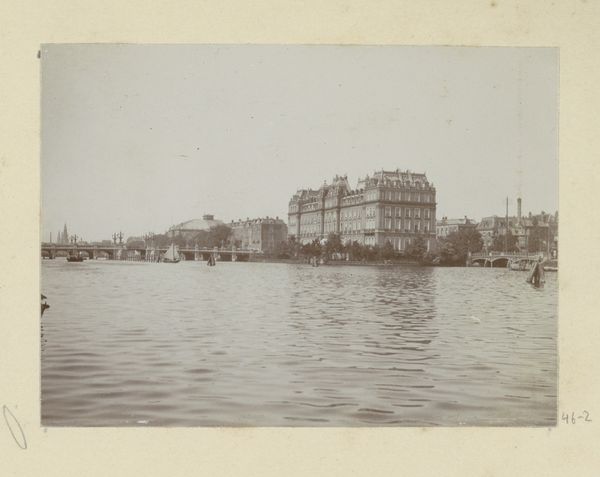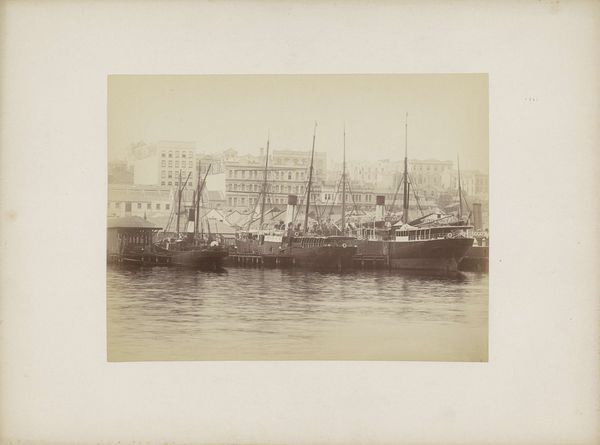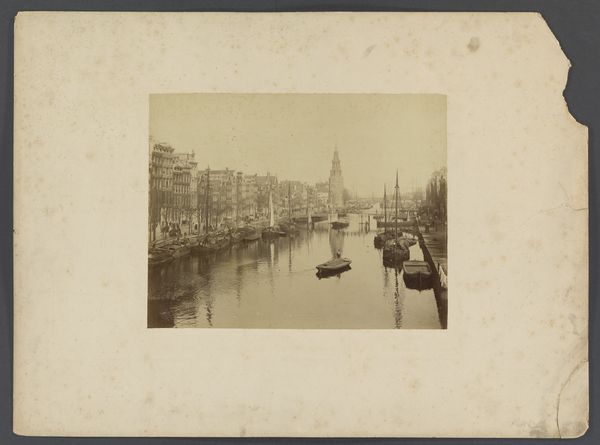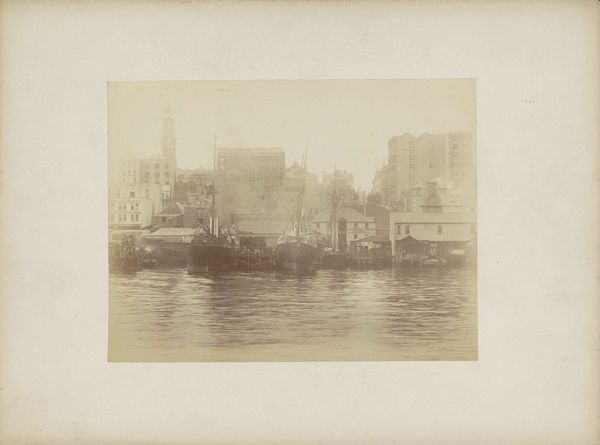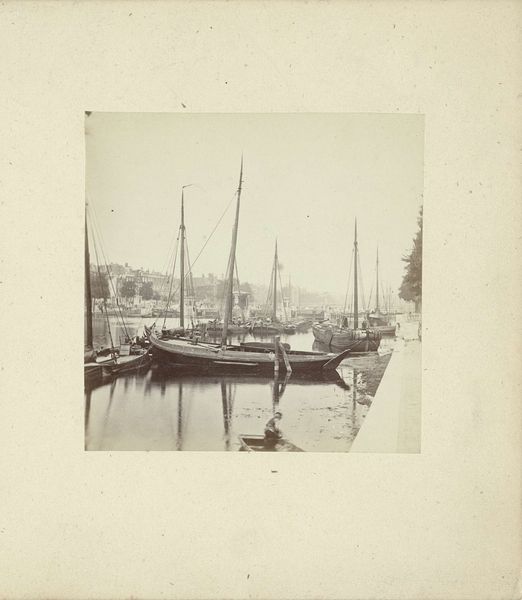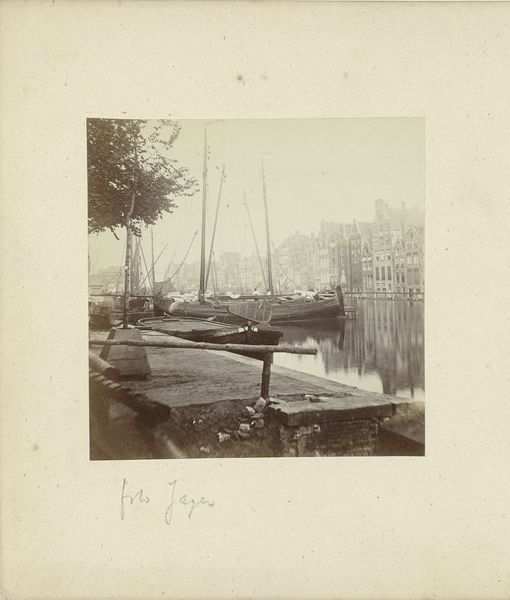
photography
#
dutch-golden-age
#
photography
#
cityscape
#
realism
Dimensions: height 82 mm, width 82 mm, height 145 mm, width 234 mm
Copyright: Rijks Museum: Open Domain
Curator: I must say, there's something melancholic about this view of the Rokin. The stillness of the water… Editor: This compelling cityscape is from around 1860-1875 and sadly its creator is currently listed as anonymous. We’re looking at an early photograph, showcasing the Rokin in Amsterdam. Curator: It’s as if time is holding its breath. I think it's the tones – this monochromatic palette evokes a very specific atmosphere. A palpable stillness, like a paused memory. It’s a really strong composition with the water taking center stage as it reflects the architecture on either side. It really showcases the architectural interplay between the buildings and their reflection on the water. Editor: Indeed. And technically, consider the mastery required for this early photographic process. Notice the sharpness, the details captured despite the limitations of the technology at the time. Observe how the depth is handled, drawing the eye along the canal. You can trace the structural organization as it reflects both the Dutch Golden Age traditions and the emergence of realism in its representation of urban life. It invites viewers to ponder the semiotics of cityscapes: how water, architecture, and human presence come to mean something together. Curator: It’s funny you should mention ‘meaning.’ My gut reaction is of being right there. I imagine the air and the faint sounds echoing through the canal. This piece feels intimate even with the vastness of the cityscape; there is that figure in a boat near the front! Editor: Your intuitive response speaks to the emotional accessibility inherent in realist art. But how interesting to examine the choice not to depict figures prominently and in doing so, focuses on the quietness and grandeur of Amsterdam as a backdrop. This photograph acts almost as a tableau—staging the physical structure and leaving room for interpretation. Curator: A tableau...yes! And that emptiness charges it with emotion. I suppose it also allows those familiar buildings and architectural patterns to suggest narrative themes of stability and a calm urban existence. Overall, I find the piece extremely successful in the way that it portrays stillness, emotion, and structure all at the same time. Editor: Absolutely. I found it helpful to look closely at how formal constraints help it communicate so much about both a historical context and that feeling it can give viewers in the present day.
Comments
No comments
Be the first to comment and join the conversation on the ultimate creative platform.
